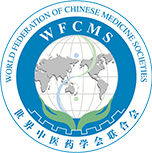Rhizoma drynariae improves endometrial receptivity in a Mus model of dysfunctional embryo implantation
Release time: Mar 13,2023
Reading volume: 830
Abstract:
Background: Rhizoma drynariae is a traditional Chinese medicine used in orthopedics and traumatology, but its effect on endometrial receptivity remains unknown. Aims and Objectives: To observe effect of Rhizoma drynariae and its main components on endometrial receptivity in a mus model of dysfunctional embryo implantation. Materials and Methods: Mus models were established by the GnRHa+HMG+HCG method. Normal mus receiving saline were used as controls and the remaining six groups were: model receiving saline, progynova, aspirin, Rhizoma drynariae, osteopractic total flavone, and naringin. Pinopodes in uterine endometrium were examined by scanning electron microscopy. Stem cell factor (SCF) mRNA expressions was determined by real-time RT-PCR, and estrogen receptor α (ERα), progesterone receptor (PR) by immunohistochemistry. Results: In the model group, surface morphology of endometrium was heterogeneous, without obvious pinopodes. In the Rhizoma drynaria and progynova groups, pinopodes were abundant. Compared with the blank group, model group had lower levels of SCF (-47%), ERα (-63%) and PR (-50%) (all P<0.05). In comparison, Rhizoma drynariae group had higher levels of SCF (+73%), ERα (+118%) and PR (+101%) (all P<0.01). The individual main components of Rhizoma drynariae had variable efficacy. Conclusion: Rhizoma drynariae could improve endometrial receptivity of mouse models of dysfunctional embryo implantation as shown by increased numbers of pinopodes and higher levers of SCF, ERα, PR compared with the model group.
Keywords: Endometrial receptivity, naringin, rhizoma drynariae, stem cell factor, total flavone

